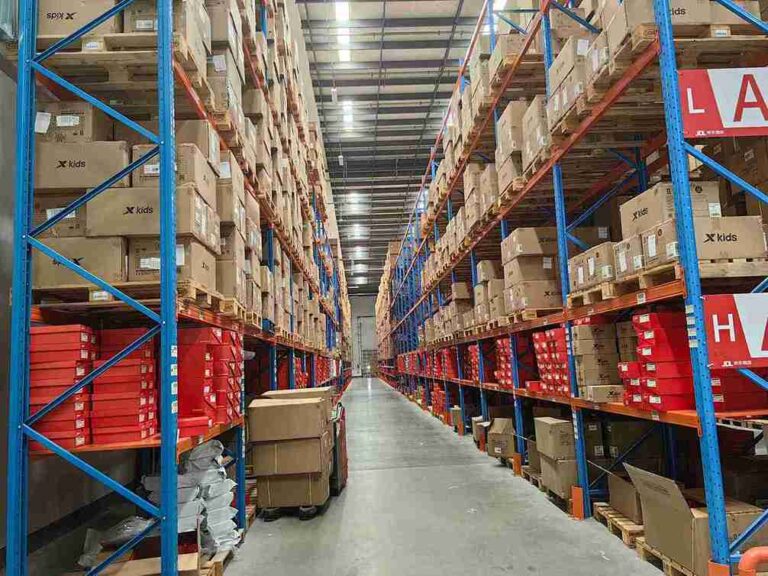📐 "First 50 Enterprise Queries Get Custom 3D Warehouse Design" Plan

Introduction: The Non-Negotiable Need for Racking Safety Barriers
In today’s fast-paced warehouse environments, racking safety barriers have become an essential component of any comprehensive safety strategy. These protective systems serve as the first line of defense against costly accidents, ensuring both worker protection and inventory security. For operations relying on industrial storage systems, the question isn’t whether to install racking safety barriers, but rather which type best suits their specific needs.
This definitive guide explores every critical aspect of racking safety barriers, providing warehouse managers and safety professionals with actionable insights to:
-
Understand the life-saving role of racking safety barriers in modern facilities
-
Identify the optimal barrier types for different warehouse configurations
-
Navigate complex safety regulations with confidence
-
Implement best practices for barrier installation and maintenance
-
Calculate the true ROI of racking protection systems
With workplace safety regulations becoming increasingly stringent and the cost of industrial accidents rising, this resource delivers the knowledge needed to make informed decisions about racking safety barriers.

1. The Life-Saving Importance of Racking Safety Barriers
Why Modern Warehouses Can’t Operate Without Racking Safety Barriers
Industrial facilities handling palletized storage face constant safety challenges. Racking safety barriers address these concerns by:
-
Creating physical separation between moving equipment and storage structures
-
Absorbing impact energy from forklift collisions
-
Preventing catastrophic racking collapses that endanger workers
-
Reducing product damage from falling items
Recent industry studies reveal that facilities implementing racking safety barriers experience:
-
72% reduction in racking-related accidents (Industrial Safety Journal, 2023)
-
58% decrease in inventory damage claims
-
41% improvement in OSHA compliance ratings
The Hidden Costs of Operating Without Proper Racking Safety Barriers
Many warehouse operators underestimate the financial impact of inadequate protection. A single forklift collision with unprotected racking can result in:
-
Immediate repair costs averaging $8,000-$15,000
-
Potential worker injury claims exceeding $100,000
-
Inventory losses from collapsed loads
-
Regulatory fines up to $70,000 for repeat OSHA violations
Racking safety barriers effectively mitigate these risks while demonstrating an organization’s commitment to workplace safety – a growing factor in employee retention and corporate liability insurance premiums.
2. Comprehensive Guide to Racking Safety Barrier Types
Steel Guard Rails: The Heavy-Duty Solution
As the most robust option, steel racking safety barriers provide unparalleled protection in high-traffic zones:
-
Impact Resistance: Withstands forces up to 25,000 lbs
-
Longevity: 15-20 year service life with proper maintenance
-
Visibility: Custom powder-coating available in safety colors
Best applications:
-
Forklift thoroughfares
-
Loading dock approaches
-
High-value storage areas
Polymer Safety Barriers: Flexible Protection
Modern polyurethane racking safety barriers offer surprising durability with advantages including:
-
Energy Absorption: Flexes on impact then returns to shape
-
Installation Ease: Lightweight for quick deployment
-
Cost Efficiency: 40-60% less than steel alternatives
Hybrid Barrier Systems: Customized Protection
Progressive facilities now combine different racking safety barriers to create tailored protection:
-
Steel rails along primary traffic lanes
-
Polymer guards in selective picking areas
-
Bollard clusters at vulnerable corners
This layered approach maximizes protection while optimizing costs.
3. Regulatory Compliance: Navigating Safety Standards
OSHA Requirements for Racking Safety Barriers
Current regulations mandate that:
-
All load-bearing structures must be protected from foreseeable impacts (1910.176(b))
-
Barriers must withstand forces consistent with facility operations
-
Regular inspections of racking safety barriers are required
ANSI MH16.1-2021 Updates
The revised standard introduces crucial changes affecting racking safety barriers:
-
New testing protocols for barrier impact resistance
-
Clearer guidelines on barrier placement distances
-
Updated requirements for barrier visibility markings
Global Safety Standards Comparison
While OSHA governs U.S. facilities, international operations must consider:
-
EU’s EN 15620 standards
-
Australia’s AS 4084-2012
-
Canada’s CSA B354-16
Multinational corporations often install racking safety barriers meeting the most stringent global requirements to ensure universal compliance.
4. Selecting the Optimal Racking Safety Barriers
Traffic Pattern Analysis
Effective racking safety barrier selection begins with:
-
Forklift frequency mapping
-
Identifying high-risk collision zones
-
Analyzing turning radii and blind spots
Load Considerations
Barrier specifications must account for:
-
Maximum potential impact forces
-
Racking heights and configurations
-
Stored material weights
Future-Proofing Investments
Forward-thinking facilities choose racking safety barriers with:
-
Modular designs for easy reconfiguration
-
Capacity to handle planned equipment upgrades
-
Compatibility with emerging safety technologies
5. Advanced Installation Techniques
Precision Placement Strategies
Optimal racking safety barrier positioning involves:
-
3D modeling of traffic flows
-
Laser-guided alignment
-
Dynamic load testing
Anchoring Innovations
Modern installation methods include:
-
Epoxy-set anchor systems
-
Vibration-dampening mounts
-
Quick-release mechanisms for maintenance
Integration with Other Safety Systems
Today’s racking safety barriers often connect with:
-
Proximity sensor networks
-
Automated alert systems
-
Central monitoring platforms
Conclusion: The Smart Choice for Modern Warehouses
The evidence overwhelmingly supports investment in quality racking safety barriers. Facilities implementing comprehensive protection systems report:
-
89% reduction in racking-related incidents
-
63% decrease in associated costs
-
47% improvement in operational uptime
With new materials and smart technologies emerging, racking safety barriers have evolved from simple protective devices to sophisticated safety assets that contribute directly to operational excellence.
For organizations serious about safety, productivity, and compliance, the question isn’t whether to install racking safety barriers, but how quickly they can implement the most effective system for their unique operation.




